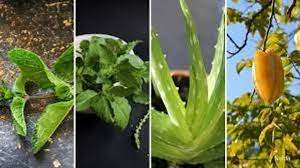The experts stated during the 9th World Ayurveda Congress (WAC) in Goa that up to 10% of the 900 key medicinal plant species present in India are in danger of going extinct.
According to scientists, up to 10% of the 900 important medicinal plant species present in India are in danger of going extinct.
Speaking at the 9th World Ayurveda Congress (WAC) today, they stated that just 15% of India’s native medicinal herbs are grown; the remainder are simply harvested from forests.
On Sunday, the four-day WAC came to an end.
According to J A C S Rao, CEO of the State Medicinal and Aromatic Plants Board, Chhattisgarh, 10% of the 900 important medicinal plants in India are classified as “threatened.”
According to him, the pace of extinction on Earth is 100 times greater than that of natural selection, with one potential therapeutic plant becoming extinct every two years.
According to Rao, some of the causes of this problem include overexploitation, the medicine industry’s heavy reliance on the animal population, habitat damage, and urbanisation.
He said, “We must implement conservation tactics including field surveys, appropriate documentation, mitigating measures, adoption of specific legislation like the Endangered Species Act, 1973, and recovery programmes.
India contains over 45,000 plant species, 7,333 of which are aromatic medicinal herbs, according to Dr. Pradip Vithal Sarmokadam, Member Secretary, State Biodiversity Board, Goa.
But only 15% of medicinal plants are grown, with the business collecting the remaining 85% from forest ecosystems as well as other natural settings,” he stated.
A formal linking of supply chains from the increased resources from the wild is a significant problem, according to former National Medicinal Plants Board CEO and Joint Secretary of the Union AYUSH Ministry Jitendra Sharma.
The Indian Forest Act, 1927, he claimed, has to be amended since there is no provision for a national transit permit that would allow the transportation of forest products throughout the nation.







